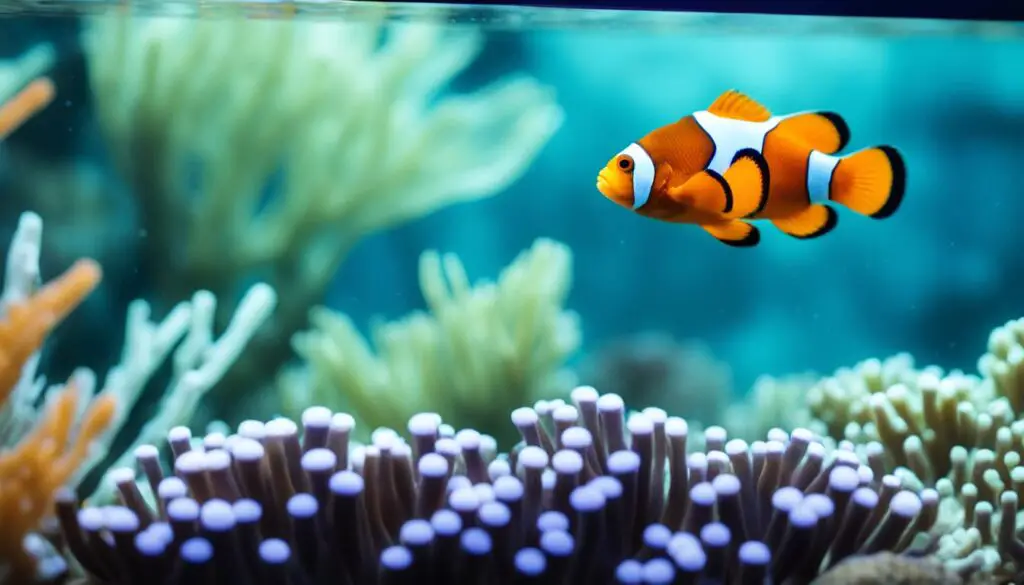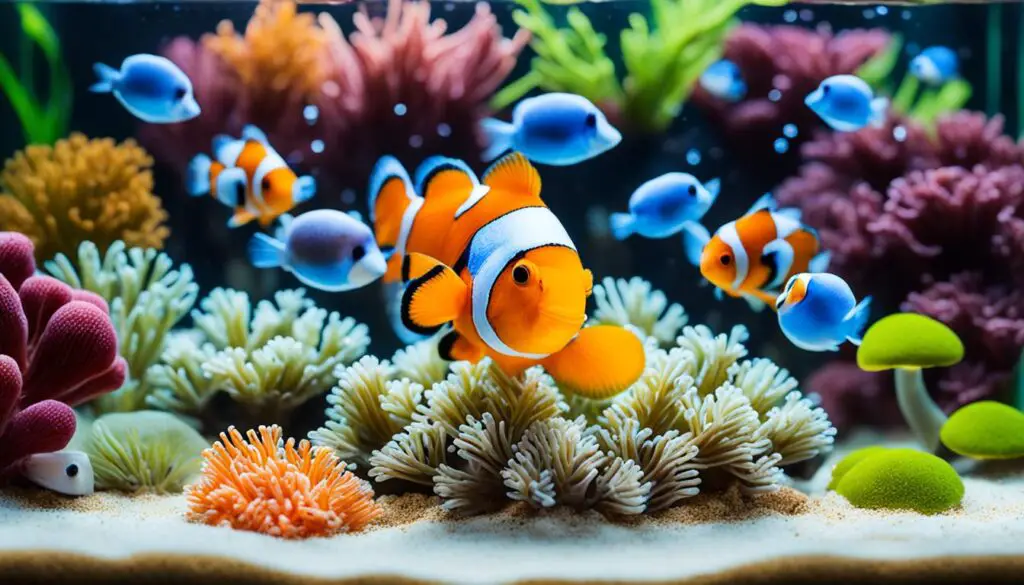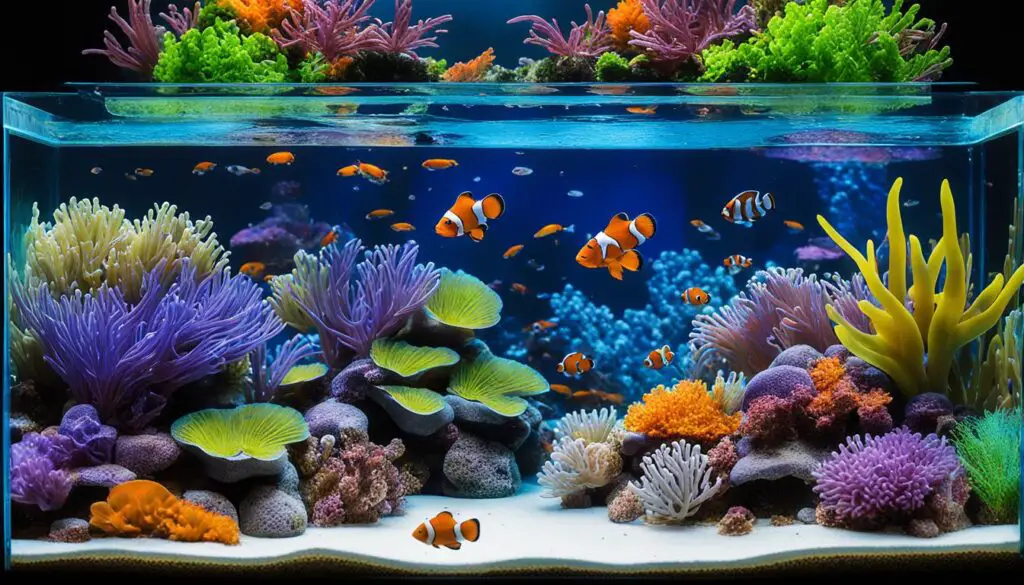What Is the Root of the Bioluminescent Sea
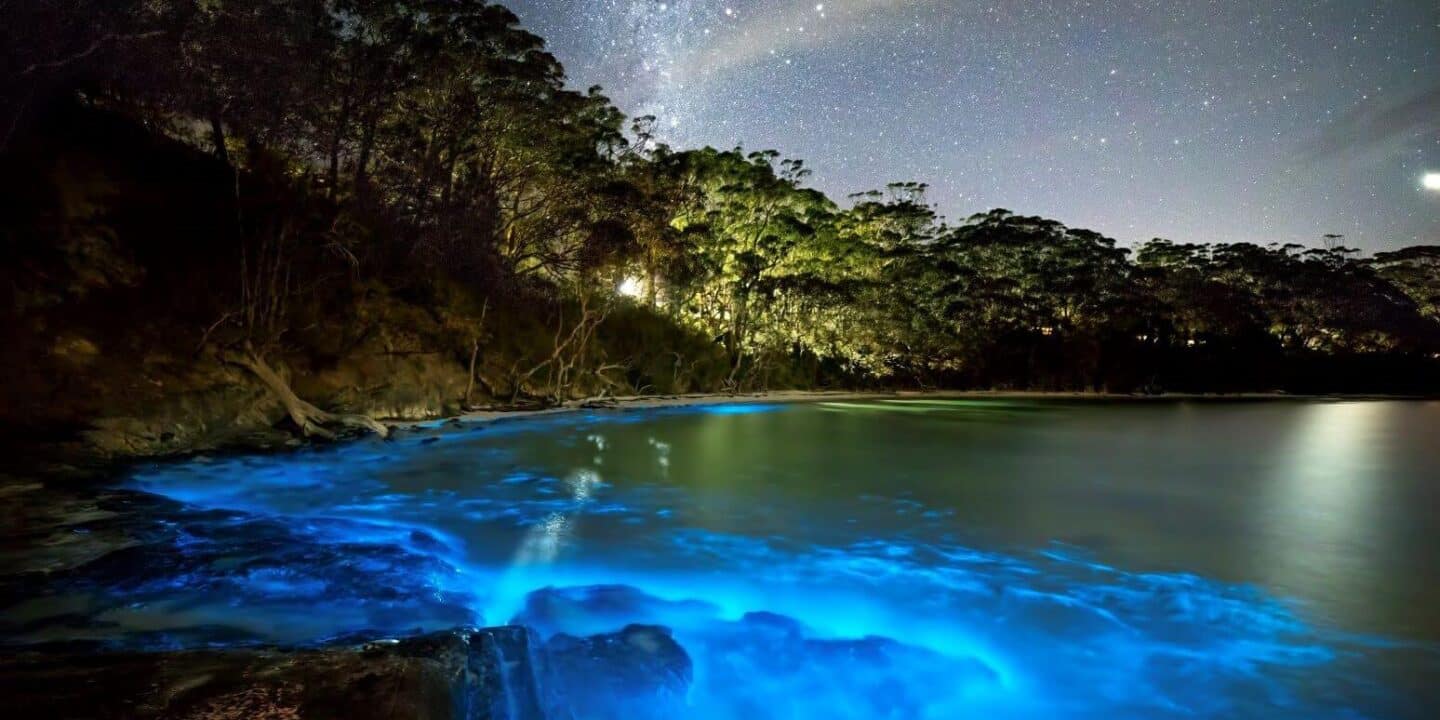
Introduction
What Causes Bioluminescent Water: Bioluminescent water is a fascinating natural phenomenon that has captivated scientists and nature enthusiasts for centuries. The mesmerizing glow emitted by certain bodies of water, such as oceans, lakes, and rivers, has long been a source of wonder and intrigue. But what exactly causes this enchanting display of light? In this article, we will explore the various factors that contribute to the creation of bioluminescent water.
Bioluminescence refers to the production and emission of light by living organisms. It is a relatively rare phenomenon found in a diverse range of organisms, including bacteria, fungi, insects, and marine creatures. In the case of bioluminescent water, the light is typically produced by tiny marine organisms known as dinoflagellates. These single-celled organisms possess the remarkable ability to emit light through a chemical reaction.
The process of bioluminescence in dinoflagellates involves the interaction of two key components: a light-producing molecule called luciferin and an enzyme called luciferase. When luciferin reacts with luciferase in the presence of oxygen, it undergoes a chemical reaction that releases energy in the form of light. This reaction is highly efficient, with nearly all of the energy being converted into light rather than heat.
Several factors can influence the intensity and frequency of bioluminescent displays in water. One of the most crucial factors is the concentration of dinoflagellates in the water. Higher concentrations of these organisms can lead to more vibrant and widespread bioluminescence. Additionally, environmental conditions such as temperature, salinity, and nutrient availability can also play a role in the production of bioluminescent water. Changes in these factors can trigger the growth and proliferation of dinoflagellates, leading to an increase in bioluminescence.
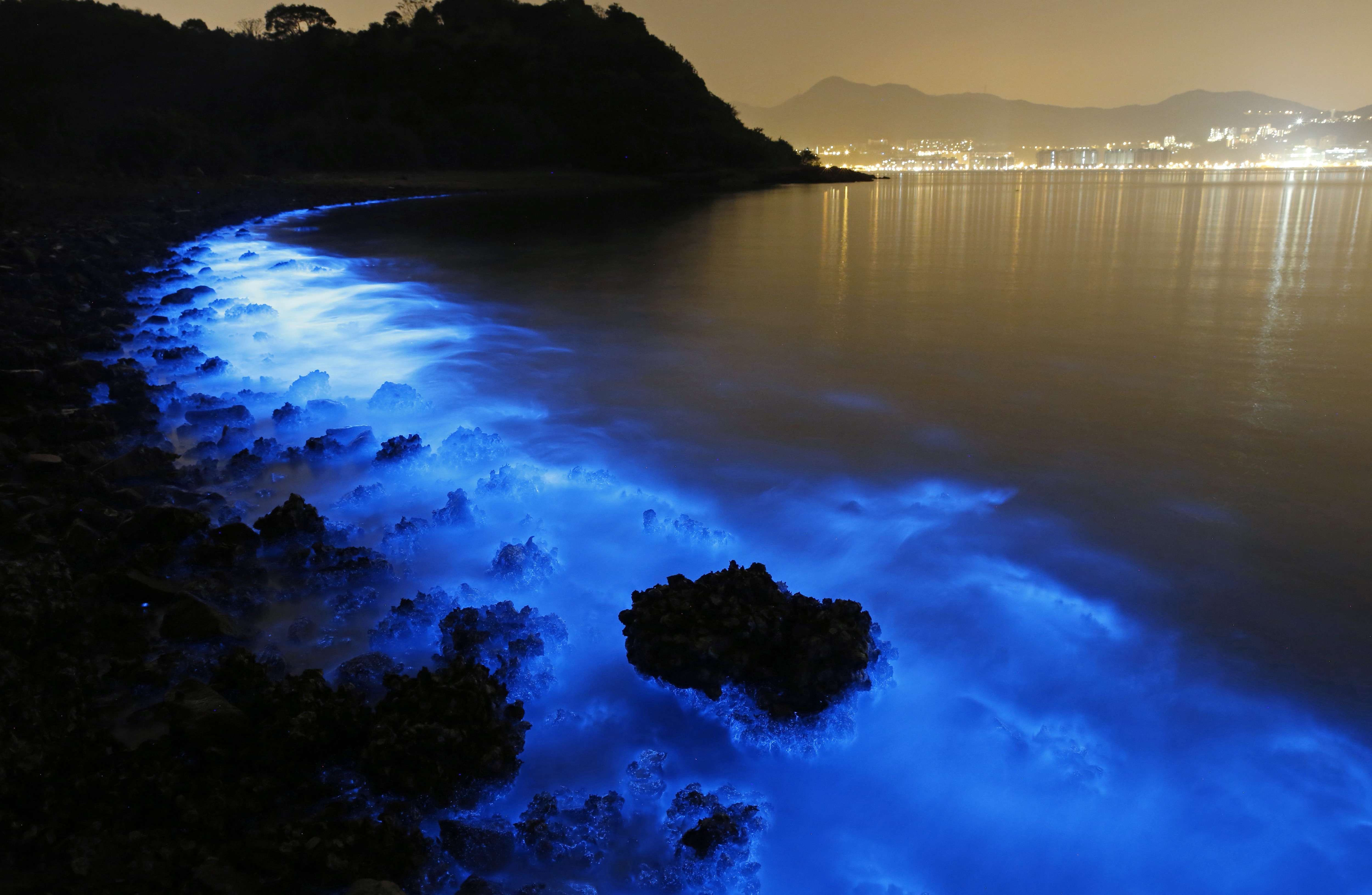
Is it safe to touch bioluminescent water?
Some bioluminescent algae produce toxins that are harmful to marine wildlife, humans, and anything that comes in contact with them, so it may not be safe to touch the algae or swim in bioluminescent water.
Bioluminescent water, also known as glowing water, is a fascinating natural phenomenon that occurs when certain marine organisms emit light. This mesmerizing display of glowing blue or green water can be found in various parts of the world, such as Puerto Rico, the Maldives, and California. Many people are drawn to the beauty of bioluminescent water and wonder if it is safe to touch.
Firstly, it is important to note that not all bioluminescent water is the same. The organisms responsible for the bioluminescence can vary, and some may produce toxins or irritants. For example, in some areas, the bioluminescence is caused by dinoflagellates, which are known to produce harmful toxins. In these cases, it is advisable to avoid direct contact with the water to prevent any potential health risks.
Secondly, the sensitivity of individuals to the organisms in bioluminescent water can vary. While some people may have no adverse reactions to touching the water, others may experience skin irritation or allergic reactions. It is always a good idea to be cautious and listen to your body’s signals. If you notice any discomfort or unusual reactions after touching bioluminescent water, it is best to wash the affected area thoroughly with fresh water and seek medical advice if necessary.
Some marine organisms that produce bioluminescence are delicate and can be easily damaged. Touching or disturbing these organisms can disrupt their natural habitat and potentially harm their populations. It is crucial to be mindful of the fragility of these ecosystems and to avoid any actions that could cause harm.
Can you swim in bioluminescent water?
Twinkling across the ocean floor, bioluminescent algae is poisonous to marine life from fish to sea turtles and may make humans very sick if they ingest it.
“Bioluminescent water” refers to bodies of water that are rich in light-emitting organisms like plankton or bacteria.
The answer to whether you can swim in bioluminescent water depends on a few factors. Firstly, it is important to note that not all bioluminescent water is safe for swimming. Some bioluminescent organisms, such as certain types of dinoflagellates, can produce toxins that can be harmful to humans. Therefore, it is crucial to research and ensure that the specific bioluminescent water you are considering swimming in is safe.
It is nevertheless necessary to be aware of the local ecology and its inhabitants, even if the bioluminescent water is safe to drink.If humans swim in the bioluminescent water, it could disrupt the delicate ecosystems that these organisms rely on. If you want to limit the amount of damage done by the organisms, you should avoid coming into contact with them as little as possible. We owe it to future generations to preserve bioluminescent water so that they, too, can marvel at its beauty.
The only places on Earth where swimming in bioluminescent water is not only acceptable, but encouraged, are in a select few locations. Bioluminescent bay in Vieques, Puerto Rico, is a popular spot for tourists to swim and kayak.
In conclusion, while it is possible to swim in bioluminescent water, it is important to exercise caution and respect for the environment. Researching the safety of the specific bioluminescent water and being mindful of the impact of our actions on the organisms and their ecosystem is crucial. By doing so, we can enjoy the magical experience of swimming in bioluminescent water while also preserving its beauty for future generations.
What is the major cause of bioluminescence?
The chemical reaction that results in bioluminescence requires two unique chemicals: luciferin and either luciferase or photoprotein. Luciferin is the compound that actually produces light. In a chemical reaction, luciferin is called the substrate.
Bioluminescence is the phenomenon of living organisms producing light. It is a fascinating natural phenomenon that has intrigued scientists for centuries. The major cause of bioluminescence is the presence of luciferin and luciferase, two key components that work together to produce light. These components are found in a variety of organisms, including bacteria, fungi, and marine animals.
The light-emitting pigment luciferin is what does the actual work. A chemical process takes place in this molecule when it is oxidized by the enzyme luciferase. Light is the form of energy released by this process. Most bioluminescent creatures have trace levels of luciferin in their cells.
Luciferase is the enzyme that catalyzes the oxidation of luciferin, triggering the production of light. It is a highly specific enzyme that is able to recognize and bind to luciferin, allowing the chemical reaction to occur. Luciferase is typically produced by the organism itself and is often found in specialized light-emitting organs or cells.
While luciferin and luciferase are the major cause of bioluminescence, there are other factors that can influence the intensity and color of the light produced. For example, the presence of other molecules, such as calcium ions or oxygen, can affect the efficiency of the reaction and the color of the light emitted. Additionally, the structure and arrangement of the cells or organs that contain luciferin and luciferase can also impact the brightness and directionality of the light.
What causes bioluminescence in Florida water?
Dinoflagellates (plankton) light up a bright iridescent blue during the summer, making it appear as if the water was glowing. Going on this tour is an incredibly mystical experience, as your clear kayak will light up from all sides, allowing you to feel like you are a part of the magical bioluminescent world.
Bioluminescence in Florida water is a fascinating natural phenomenon that has captivated both scientists and tourists alike. The glowing blue light emitted by certain organisms in the water creates a magical and ethereal experience for those lucky enough to witness it. But what exactly causes this mesmerizing display of bioluminescence?
One of the main factors that contribute to bioluminescence in Florida water is the presence of dinoflagellates, a type of single-celled organism. These tiny organisms are responsible for the majority of bioluminescent displays in the water. When disturbed, such as by the movement of a boat or a swimmer, dinoflagellates release a burst of light, creating the glowing effect. This is a defense mechanism for the organisms, as the sudden burst of light can startle or deter potential predators.
Another factor that plays a role in bioluminescence is the presence of nutrients in the water. Dinoflagellates require certain nutrients, such as nitrogen and phosphorus, to thrive and reproduce.
When these nutrients are abundant in the water, dinoflagellate populations can increase, leading to more frequent and intense bioluminescent displays. This is why bioluminescence is often more prominent in areas with high levels of nutrient runoff, such as near agricultural or urban areas.
The temperature of the water also plays a role in bioluminescence. Dinoflagellates tend to thrive in warmer waters, so areas with higher water temperatures are more likely to experience bioluminescence. In Florida, the warm climate and the Gulf Stream current create ideal conditions for dinoflagellates to flourish, resulting in frequent bioluminescent displays along the coast.
All of these things come together to make the bioluminescent waters of Florida famous around the world for their enchanted blue glow.
Can you see human bioluminescence?
Actually, human bodies do emit light but it is 1,000 times less intense than the levels to which our naked eyes are sensitive. In simple terms, human bioluminescence in visible light exists, it’s just too dim for our weak eyes to pick up on.
The term “human bioluminescence” describes when people give forth light. Jellyfish and fireflies are just two examples of marine species that exhibit bioluminescence; whether or not humans do as well is a matter of great conjecture and controversy.
Human bioluminescence has been claimed by some, but because no concrete evidence exists to back up these claims, they are typically dismissed as hallucinations or exaggerations. However, recent studies suggest that people may be able to bioluminesce.
In 2009, Japanese scientists discovered that humans emit a faint glow that is not visible to the naked eye.
Another study published in 2020 by a team of scientists from France and Germany provided further evidence of human bioluminescence. The researchers used a technique called cryo-electron microscopy to study the structure of melatonin, a hormone known to regulate sleep-wake cycles. They discovered that melatonin has the ability to absorb and emit light, suggesting that it could potentially contribute to human bioluminescence.
While these studies offer intriguing insights into the possibility of human bioluminescence, it is important to note that the emitted light is extremely faint and not visible to the human eye under normal conditions. It would require highly sensitive equipment and specialized techniques to detect and measure this light. Therefore, the average person cannot see human bioluminescence without the aid of scientific instruments.
How does bioluminescence occur in water?
Bioluminescence in water occurs when certain organisms, such as bacteria, algae, and marine animals, produce and emit light. This phenomenon is a result of a chemical reaction within these organisms. The process involves the interaction of a light-emitting molecule called luciferin and an enzyme called luciferase. When luciferin reacts with luciferase and oxygen, it produces light. This reaction is often triggered by specific stimuli, such as movement, disturbance, or changes in temperature or pH levels.
Bioluminescence in water can also occur through symbiotic relationships between organisms. For example, some species of fish have a symbiotic relationship with bioluminescent bacteria. The bacteria live in special organs within the fish and produce light, which the fish can use for various purposes, such as attracting prey or communicating with other fish.
In summary, bioluminescence in water is a fascinating natural phenomenon that occurs when certain organisms produce and emit light through chemical reactions involving luciferin and luciferase. It can also occur through symbiotic relationships between organisms, where one organism benefits from the light produced by another.
What are the factors that contribute to the presence of bioluminescent water?
Bioluminescent water is a fascinating natural phenomenon that occurs due to several factors. One of the main factors is the presence of bioluminescent organisms such as dinoflagellates, bacteria, and certain species of fish. These organisms have the ability to produce light through a chemical reaction called bioluminescence. When these organisms are disturbed or agitated, they emit light, creating a mesmerizing glow in the water.
Another factor that contributes to the presence of bioluminescent water is the availability of nutrients. Bioluminescent organisms require specific nutrients, such as nitrogen and phosphorus, to thrive and produce light. These nutrients can come from various sources, including decaying organic matter, marine plants, and even human activities such as pollution. When these nutrients are abundant in the water, it creates favorable conditions for the growth and proliferation of bioluminescent organisms, leading to the presence of bioluminescent water.
Can bioluminescent water be artificially created?
Yes, bioluminescent water can be artificially created through a process called bioluminescence engineering. This involves introducing the genes responsible for bioluminescence into a target organism, such as bacteria or algae, through genetic modification. By inserting these genes, scientists can make the organism produce the necessary enzymes and proteins that generate light.
One method of creating bioluminescent water is by genetically modifying marine bacteria. These bacteria naturally produce bioluminescence, but by manipulating their genetic makeup, scientists can enhance their light production or make them produce light in different colors. This can be achieved by introducing genes from other bioluminescent organisms or by modifying the existing genes within the bacteria.
Another approach to creating bioluminescent water is through genetic modification of algae. Algae are photosynthetic organisms that can be engineered to produce bioluminescence. By introducing the necessary genes, scientists can make the algae emit light when exposed to certain conditions, such as specific nutrients or light wavelengths. This can be particularly useful for creating bioluminescent water in controlled environments, such as aquariums or decorative water features.
Are there specific organisms or species responsible for bioluminescent water?
Yes, there are specific organisms and species that are responsible for bioluminescent water. One of the most well-known organisms is the dinoflagellate, a type of plankton. These tiny organisms have the ability to produce light through a chemical reaction called bioluminescence. When they are disturbed, such as by movement in the water or waves crashing on the shore, they emit a beautiful blue-green glow. Another organism responsible for bioluminescent water is the comb jelly. These gelatinous creatures have rows of tiny hair-like structures called cilia that scatter light, creating a shimmering effect in the water.
Other organisms that contribute to bioluminescent water include certain species of bacteria, fungi, and even some fish. For example, the anglerfish has a bioluminescent lure on its head that it uses to attract prey in the dark depths of the ocean. The flashlight fish also has bioluminescent organs under its eyes, which it uses to communicate with other members of its species. These organisms have evolved the ability to produce light as a means of communication, camouflage, or attracting prey, and they play a crucial role in creating the mesmerizing phenomenon of bioluminescent water.
What are the potential ecological benefits of bioluminescent water?
Bioluminescent water, with its mesmerizing glow, not only captivates our imagination but also plays a crucial role in the ecosystem. One of the potential ecological benefits of bioluminescent water is its role in predator-prey interactions. Many bioluminescent organisms use their light to attract prey or confuse predators. For example, some deep-sea fish have bioluminescent organs called photophores that they use to lure smaller fish towards their mouths. This not only helps them find food but also maintains the balance of the food chain.
Another ecological benefit of bioluminescent water is its role in communication and mate attraction. Some organisms, such as fireflies, use their bioluminescence to communicate with potential mates. The flashing patterns and intensity of their light signals can be species-specific, allowing individuals to find suitable partners for reproduction. This ensures genetic diversity and the survival of the species.
Furthermore, bioluminescent water can also serve as a defense mechanism for certain organisms. When threatened, some bioluminescent organisms release a burst of light, which can startle or confuse their predators. This sudden burst of light can give the prey a chance to escape or deter the predator from attacking. This defense mechanism not only protects the individual organism but also contributes to the overall balance of the ecosystem.
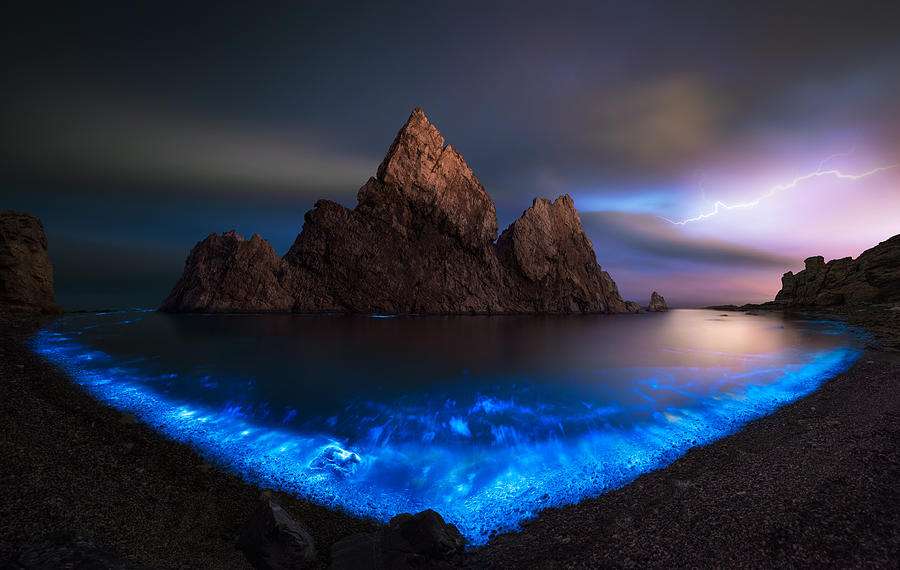
Conclusion
Bioluminescent water is a fascinating natural phenomenon that has captivated scientists and nature enthusiasts for centuries. However, the truth behind this enchanting spectacle lies in the intricate biological processes that occur within certain organisms.
One of the main causes of bioluminescent water is the presence of bioluminescent organisms. These organisms, such as certain species of bacteria, algae, and marine animals, possess the ability to produce light through chemical reactions within their bodies. This light production is a result of a complex series of biochemical reactions involving luciferin, an organic molecule, and luciferase, an enzyme that catalyzes the reaction.
Certain environmental circumstances can contribute to the production of bioluminescent water. The high concentrations of nutrients and organic matter in the water along the coast make it an ideal habitat for bioluminescent organisms. Bioluminescent organisms can thrive in this environment and create bioluminescent water because of the high availability of food, oxygen, and other essential elements. Temperature, salinity, and pH can all play a role in how often and how brightly bioluminescence occurs in aquatic situations.
Human activities can also play a role in causing bioluminescent water. Pollution, particularly from industrial and agricultural sources, can introduce excessive nutrients and chemicals into water bodies. This can disrupt the delicate balance of ecosystems and promote the growth of bioluminescent organisms. Additionally, the discharge of certain chemicals and pollutants into water bodies can directly affect the bioluminescent organisms, either inhibiting or enhancing their ability to produce light.
The existence of bioluminescent organisms, in addition to other environmental elements and human activities, all contribute to bioluminescence in water. Our expanding knowledge of the mechanisms that create bioluminescent water highlights the importance of protecting these delicate ecosystems. Discover the fascinating phenomenon of bioluminescent water by learning more about the factors that cause it to light. Learn more about the physics underlying the enigmatic origins of the hypnotic glow of this natural occurrence.

